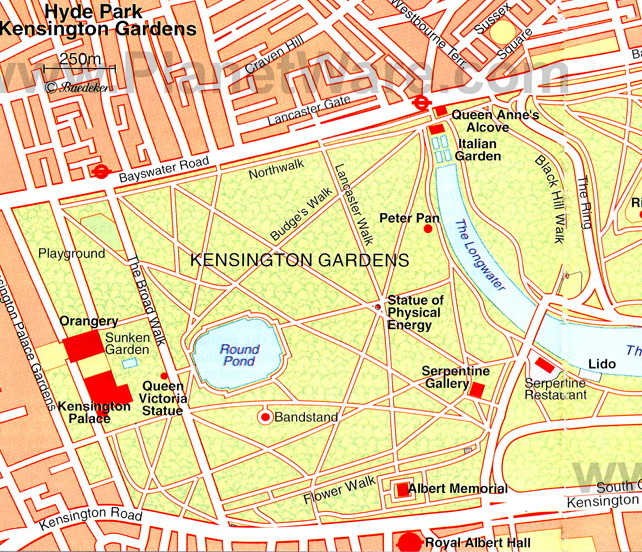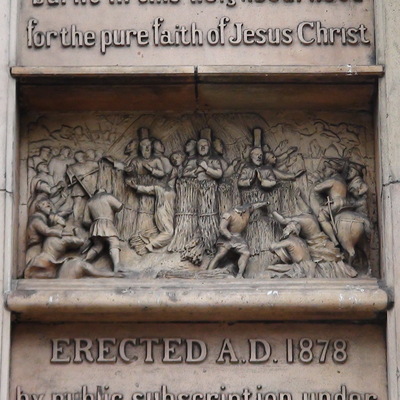Royal Parks say: "William III bought what was originally part of Hyde Park in 1689. An asthma sufferer, the king found the location quiet and the air salubrious and so he commissioned Sir Christopher Wren to design the redbrick building that is Kensington Palace. Queen Anne enlarged the Palace Gardens by 'transferring' 30 acres from Hyde Park and was responsible for the creation of the Orangery in 1704."
Queen Caroline extended the Gardens even further into Hyde Park.
This section lists the memorials where the subject on this page is commemorated:
Kensington Gardens
Commemorated ati
Buck Hill bastion
This is really an information board rather than a plaque and has a number of ...
Ha-ha in Hyde Park
We find the terminology used on the information board confusing; 'bastion' is...
Other Subjects
Burnham Beeches
A 1.44 square mile biological Site of Special Scientific Interest in Buckinghamshire. The southern half is owned by the Corporation of London and is open to the public. Its area is slightly larger ...
Clissold Park and House
Built as Paradise House, or Newington Park House, in the late 1700s for Jonathan Hoare. William Crawshay (1764 – 1834) bought it in 1811. He objected to his daughter's choice of a husband so it was...
John Loudon
Garden and cemetery designer, city planner. Born Scotland as John Claudius Loudon. Studied biology, botany and agriculture. Came to London in 1803. His many publications include: Observations on La...
Conservators of the River Thames / Thames Conservancy
Came into being as a result of the Thames Conservancy Act,1857. Completed the building of Teddington Lock. Lost some of its responsibilities in 1909 to the Port of London Authority and in 1974 the ...
Previously viewed
London Mint Office Limited
This seems to be a commercial organisation making and selling coins to collectors, with no connection to the Royal Mint.
English Heritage
English Heritage (officially the English Heritage Trust) is a charity that manages over 400 historic monuments, buildings and places. These include prehistoric sites, medieval castles, Roman forts,...
Stratford Martyrs
E15, Broadway, St John’s Church
The event on 27 June 1556 was a big draw: "These 11 men and 2 women were brought, pinioned, from Newgate and suffered death here in the p...











Comments are provided by Facebook, please ensure you are signed in here to see them